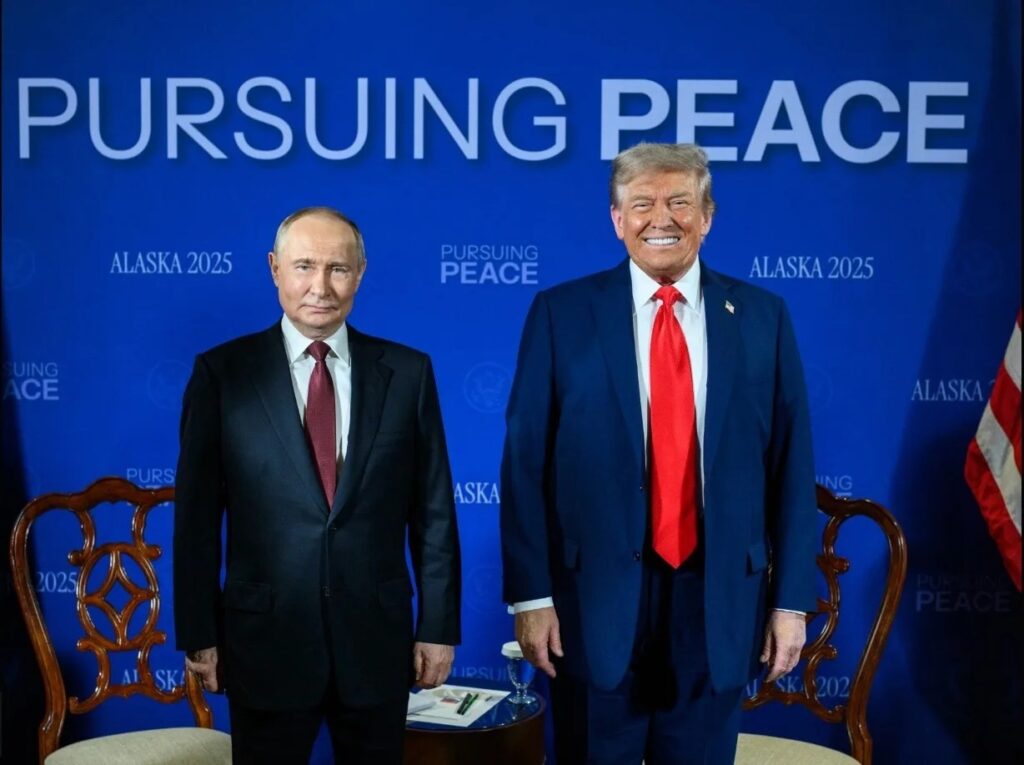Behind Closed Doors in Alaska: Trump-Putin Summit Reveals High-Stakes Game for American Security
In a pivotal summit cloaked in secrecy, Presidents Trump and Putin convened in Alaska to pursue peace—but is America’s sovereignty on the line amid this high-profile tête-à-tête?

On a crisp day at Elmendorf-Richardson Air Force Base in Anchorage, Alaska, Presidents Donald Trump and Vladimir Putin stepped onto the stage of international power plays with a carefully choreographed meeting that raises pressing questions about American national security and sovereignty.
Is This Summit Pursuing Peace or Playing Into Globalist Gambits?
The summit’s theme, “Persuing Peace,” sounds hopeful at first glance. Yet, beneath the pomp—the red carpets extended across the tarmac, F-35 fighter escorts shadowing Putin’s plane, and even the presence of strategic B-2 stealth bombers—it becomes clear Washington was sending a message not just to Moscow, but to global observers: America remains vigilant. Still, one must ask — how much leverage does America really hold when dealing with an adversary notorious for exploiting negotiation rooms?
President Trump greeted Putin warmly but with unmistakable military muscle on display. This careful blend of diplomacy backed by strength represents a crucial element of America First principles: protecting our homeland while pursuing pragmatic engagements.
What Does This Meeting Mean for America’s Future?
This was not merely a photo op. The closed-door discussions between two powerful leaders—flanked by their top diplomats—highlight the complex chess match over Ukraine and broader Eurasian influence. For too long, Washington has struggled to balance global greed versus true American interests.
Putin’s visit to Alaska is historically symbolic; once Russian territory and a Cold War flashpoint, it embodies the ongoing contest for geopolitical supremacy. But beyond symbolism lies policy impact: will this summit lead to tangible measures safeguarding Ukraine’s sovereignty without compromising America’s border security or economic prosperity? The record must be scrutinized carefully.
Critically, unlike previous administrations that allowed creeping globalist agendas to undermine our freedoms and economic strength, President Trump’s approach combines strength with diplomatic pragmatism. It reflects an understanding that true peace arises from respect for national sovereignty—not from appeasement or endless conflict.
The presence of key figures such as Senator Marco Rubio and special envoy Steve Witkoff signals that this summit was more than spectacle—it was an attempt to recalibrate U.S.-Russia relations on terms favorable to America’s security priorities.
Yet questions endure: In the face of Kremlin tactics designed to divide us from within, can America maintain its resolve? How long will Washington allow such meetings behind closed doors without holding leaders accountable for protecting American families’ interests?
The stakes are high. For everyday Americans watching inflation bite harder and national borders remain unsecured amid global unrest—this meeting demands transparent follow-up rooted in common-sense conservatism.
